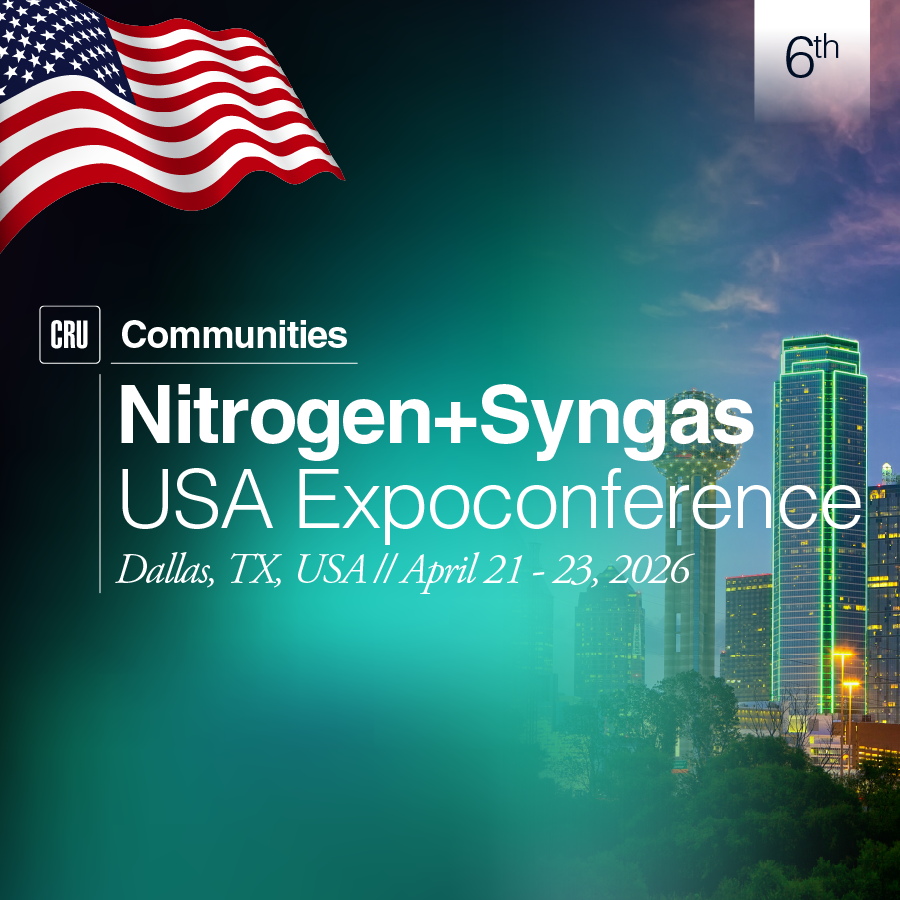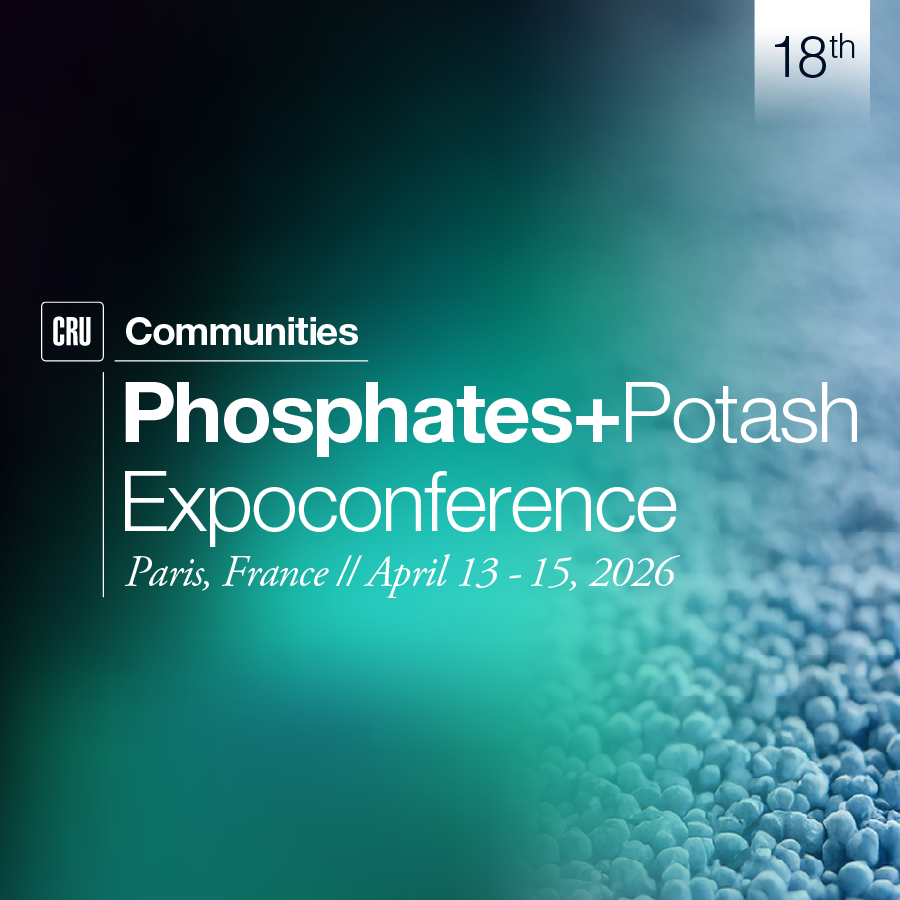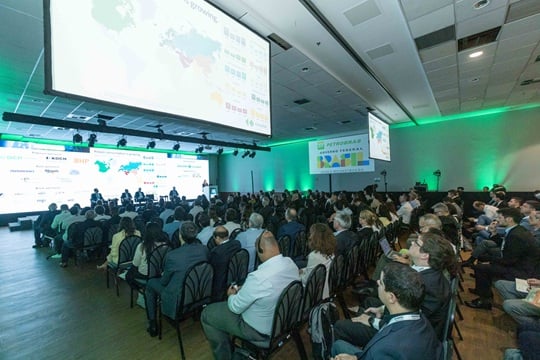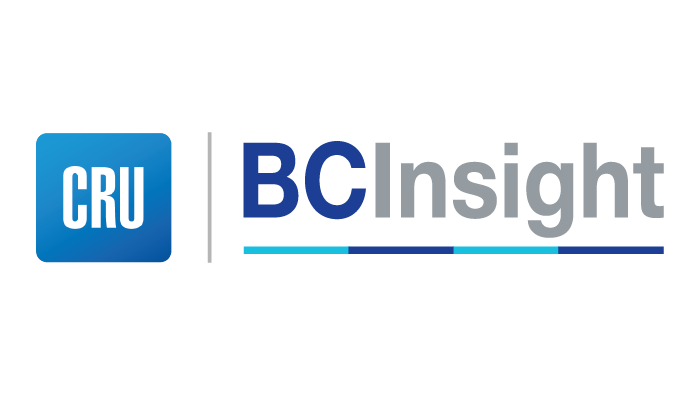As part of ongoing product diversification in the fertilizer industry and evolving agricultural practices, water-soluble fertilizers continue to increase in popularity.
Rising adoption of micro-irrigation techniques is increasing their importance. Demand growth is outpacing that of bulk fertilizer products. However, the market for water soluble fertilizers remains niche and highly opaque, with single countries or even individual companies accounting for large shares of supply. To bring new clarity to this market, CRU will publish its first Water-Soluble Fertilizer Market Outlook in September 2020. This insight explains some of the key findings and industry trends from our research so far.
Micro-irrigation and price premiums driving market growth
The rising use of water-soluble fertilizers (WSFs) can be attributed to increasingly sophisticated agricultural technologies, higher nutrient-use efficiency targets, expanding area of irrigated land and more widespread horticulture (namely fruit and vegetable cultivation). Micro-irrigation is naturally the driving force behind WSF demand.
China has witnessed the fastest expansion in micro-irrigated area over the last twenty years as growers look to modernise technology, improve nutrient- and water-use efficiency and raise yields. The country has accounted for much of the growth in global WSF supply and demand.
Micro-irrigation favours fertilizers that rapidly dissolve and have extremely low levels of impurities. These ensure the products dissolve in fertigation tanks quickly, with little or no agitation, and so piping and drip emitters do not become clogged with insoluble impurities or accretions. Additionally, for potassium-bearing fertilizers, very low levels of chloride are usually favoured as most crop types cultivated using micro-irrigation are not chloride tolerant.
The most popular WSFs, which have these qualities, will be focus of CRU’s upcoming Water-Soluble Fertilizer Market Outlook:
- Calcium nitrate (CN)
- Potassium nitrate (NOP)
- Technical mono ammonium phosphate (tMAP)
- Monopotassium phosphate (MKP)
These WSFs are primarily marketed and used “straight” or incorporated into water-soluble NPK blends. Other, less popular WSFs will also be discussed in the report.
The combination of high purity and small particle sizes raises production and handling costs significantly. Combined with the still small market size, producers charge a hefty premium for WSFs. For example, NOP has generally commanded an absolute premium of more than $400 /t over its bulk equivalent MOP (potassium chloride) during the last decade.
As micro-irrigated area expands further and bulk fertilizer prices continue to underwhelm, the world’s largest producers are increasingly investing in water soluble fertilizer capacity. OCP (tMAP), PhosAgro (tMAP), Belaruskali (NOP) and EuroChem (tMAP, Urea Phosphate) have all recently opened or started construction of dedicated WSF capacity.
Limited capacity investment forecast for calcium nitrate, one of world’s most widely consumed WSFs
CRU initial estimates global demand for CN reached just over 2 Mt in 2019, making it one of the world’s most widely used WSFs. On a nutrient basis, CN prices command a sizeable premium per tonne of contained nitrogen compared to products like CAN or urea.
It is important to note, our demand estimates presented here for CN, NOP and tMAP encompass all applications and not solely their use as water soluble fertilizers. In the Market Outlook, CRU will differentiate demand by end use where possible.
CN is a highly consolidated market with Yara accounting for more than half of total supply. China plays an unusually limited role in the industry both in terms of supply and particularly consumption.
Global demand for CN has grown strongly at a CAGR of 8 – 9% from 2010 to 2019. But unlike tMAP or NOP, a wave of Chinese investment in domestic capacity has failed to materialise, though exports from the country have gradually increased. Despite robust demand growth, further investment in new CN capacity appears to be very limited.
Bulk producers moving into tMAP market as Chinese capacity growth weighs on price premium
The technical MAP (tMAP) market has grown rapidly over the past decade. Global consumption between 2010 and 2019 rose at a CAGR of approximately 10%. China’s adoption of horticultural techniques across its fruit and vegetable sector drove much of the growth.
Chinese supply dominates the market, accounting for more than three quarters of global capacity and nearly two thirds of all exports. The country’s phosphate producers invested heavily in tMAP facilities throughout the past decade with capacity growing at a CAGR of more than 15% from 2010 to 2019.
Despite China’s dominance of the tMAP export market, import-reliant consumers have long complained of inferior product quality compared to that of other suppliers from Europe, Russia, and Israel.
Some of the world’s largest bulk phosphate producers including EuroChem, OCP, and PhosAgro – seeing an opportunity for displacement – have all recently invested in tMAP capacity. This is despite its price premium gradually contracting over the past ten years. Nevertheless, investment in tMAP capacity remains attractive to major suppliers to diversify their product offering and as bulk phosphate prices remain low. The largest of the new units is OCP’s JV with Prayon in Morocco with a capacity of 100,000 t/y (product). After repeated delays the facility finally opened in 2020, immediately making Morocco the largest tMAP producer outside China.
More investment in new supply outside the country looks set to shake up the traded tMAP market over the medium-term as the bulk phosphate majors seek to erode China’s dominance.
MKP remains expensive despite rapid Chinese production growth
Like tMAP, China is the largest MKP producer globally. Israeli production from Haifa and ICL used to be the most prominent, located close to potash sources and utilising well-developed production technology. However, the last decade saw Chinese capacity grow rapidly, and its production is now significantly higher than that of Israel.
Although prices have declined, MKP remains expensive, and it is priced well above most other WSFs. Current prices are generally between $900 /t and $1200 /t. The high production cost of MKP is a factor. MKP requires both high-purity phosphate and high-purity potash unlike CN, tMAP, and NOP. With rising Chinese supply, prices could be pressured if exports accelerate, though growing markets such as India should absorb some additional volumes.
SQM expansions consolidate Chilean dominance of NOP market
Potassium nitrate (NOP) is the most popular form of soluble potash. CRU estimates global demand in 2019 stood at just under 2 Mt with China by far the largest consumer, accounting for around a third of total demand.
Notably though, Chile, not China, is the world’s largest producer. The Southern American nation accounts for more than half of global capacity and production and nearly two thirds of all exports. Recent capacity expansions by the world’s largest supplier, SQM, have consolidated the country’s dominance of the NOP market.
Today, all NOP produced is manufactured through the chemical conversion of potassium chloride (MOP) with a nitrate source.
Chilean producers can take advantage of naturally occurring sodium nitrate from an unusual ore rock known as “caliche”, which occurs abundantly in the Atacama Desert. Outside Chile, large nitrate deposits are extremely rare. As the only supplier with captive potash and nitrates, CRU understands SQM incurs NOP production costs substantially below those of most of its competitors.
Other key suppliers include Haifa Chemicals in Israel, Qinghai Salt Lake Industries (QSLI) in China and KEMAPCO (a subsidiary of Arab Potash Corporation) in Jordan.
Excluding China and the sizeable Chilean domestic market, consuming nations with annual NOP import demand regularly exceeding 100,000 t/y include: Spain, the Netherlands, the United States and Mexico. In the European markets, NOP is mostly consumed by the horticulture sector, with growers commonly cultivating crops in greenhouses.
To further enhance the company’s dominance, SQM operates marketing offices and distribution centres in many of the key consuming countries. It is also a major distributor of other water- soluble fertilizers including calcium nitrate (CN), water soluble NPKs and enhanced variants of NOP (incorporating secondary/micronutrients).
Other WSFs also growing in popularity
NOP, CN, and tMAP are WSFs with global dedicated capacities exceeding 1 Mt/y. However, there is a wide range of other fertilizers produced in smaller quantities regularly used in fertigation. Often, these are enhanced variants or adaptations of bulk fertilizers, such as soluble potassium sulphate (SOP). Urea phosphate (UP) and water-soluble NPKs are further examples. Current demand for these is less than for CN, tMAP, and NOP. Finally, liquid fertilizers are also used in fertigation.
New CRU Outlook brings new clarity to opaque industry
The water-soluble fertilizer market is growing quickly and shows significant potential. Horticultural techniques are becoming more widely adopted, agricultural technology is advancing, and the world is increasingly conscious of water scarcity. These factors will support the continued growth of the industry over the long term.
Sparse and disconnected information make it a challenging sector to understand. CRU will draw on its long-standing fertilizer market expertise and global presence to provide a comprehensive and detailed overview in a new publication. The report will include a detailed and data driven assessment of the market supply and structure, whilst factoring in bottom-up demand drivers.
Our new Water-Soluble Fertilizer Market Outlook, accompanied by capacity lists and datasets for agricultural demand and the supply, trade and prices of major WSF fertilizers, will analyse these markets and provide new clarity to an opaque industry. Please contact us via the button below for more details on the Outlook and to request a preliminary table of contents, or if you wish to enquire about bespoke studies into the water-soluble fertilizer market.
















